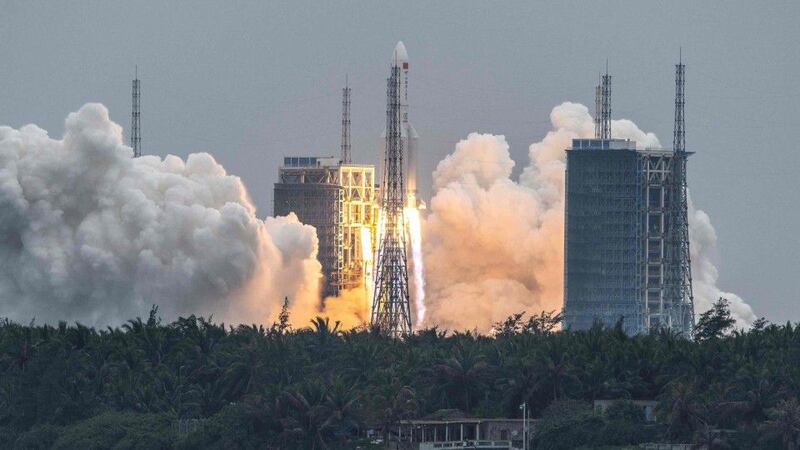Eyes are on the skies as a remnant of China’s first module for its Tianhe space station hurtles toward Earth, with an uncontrolled re-entry to the planet’s atmosphere expected sometime, somewhere Saturday.
The 46,000-pound Chinese rocket Long March-5B launched the “Heavenly Harmony” unmanned core module into low-Earth orbit one week ago from Wenchang, The Guardian reported.
Based on its current orbit, the rocket stage is passing over Earth as far north as New York, Madrid and Beijing and as far south as southern Chile and Wellington, New Zealand, the outlet reported.
Although the core should have followed a predetermined flight path into the ocean after separating from the rest of the rocket, it instead settled into a temporary orbit and continues losing altitude, setting the stage for “one of the largest ever uncontrolled re-entries,” The Guardian reported.
“U.S. Space Command is aware of and tracking the location of the Chinese Long March 5B in space, but its exact entry point into the Earth’s atmosphere cannot be pinpointed until within hours of its reentry, which is expected around May 8,” spokesperson Lt. Col. Angela Webb told CBS News.
According to the network, the space junk is currently orbiting the planet “unpredictably every 90 minutes” at more than 17,000 mph.
Although roughly 70% of the Earth’s surface is covered in water, boosting the chances the debris strikes an uninhabited area, the unpredictability of the object’s trajectory has raised concerns.
“Last time they launched a Long March 5B rocket, they ended up with big long rods of metal flying through the sky and damaging several buildings in the Ivory Coast,” Jonathan McDowell, an astrophysicist at Harvard University’s Astrophysics Center, told The Guardian.
“Most of it burned up, but there were these enormous pieces of metal that hit the ground. We are very lucky no one was hurt,” he added, predicting that rocket debris that does survive reentry could be the “equivalent of a small plane crash scattered over 100 miles.”
The rocket’s reentry can be monitored here.
Cox Media Group








